By Vince Johnson and Pete Vack
Photos by Vince Johnson
A Bit on the Brescia
Vince Johnson will detail the ‘Butterfly’ Bugatti below, but first a few interesting facts about Ettore’s most successful model in terms of sales. The Brescia Bugatti was an evolution of Bugatti’s first production car from 1910, the Type 10 and Type 13. During that period, Bugatti model nomenclature was based on the length of the wheelbase, in general, the T 13 being the shortest, and the T23 the longest. But in 1921, after the total domination of an event in Italy, Ettore Bugatti decided to name his most recent model after the race.
On September 8, 1921, Ernest Friderich won the Brescia Voiturette Grand Prix at an average speed of 71.75 mph with a 16 valve Type 13 Bugatti. Competitors had to make 20 laps of a 10.7 mile course; Bugatti also placed cars in second, third and fourth places. Ettore Bugatti seized the opportunity to offer a 16 valve production model in addition to the less powerful 8 valve Type 13 line. In 1922, perhaps for the first time, customers were able to purchase a proper production racing car, a marketing ploy that worked wonders with the T35 a few years later. Brescia and Bugatti rolled easily off the tongue in any language and a legend was born.
Despite the new and catchy name, the Types under the Brescia were the old designations. In 1922, Brescia Bugattis could be purchased with the Type 23, Type 22 and Type 13 chassis. So one might have Brescia Bugatti with three different wheelbases and model names. Could get confusing.

In the sixties, Alfa owners longed for a twin plug head. Bugatti had them in 1921.The brass plugs allow access for valve adjustment.
The Type 13 engine was a four-cylinder SOHC affair and very advanced for its day prior to WWI. After the war, however it lagged behind the competition and its days were numbered by 1923. Over the long life of the SOHC four the displacement varied. The Brescia boasted 1496 cc with twin ignition and continued the use of curved tappets between the cam and the valve.
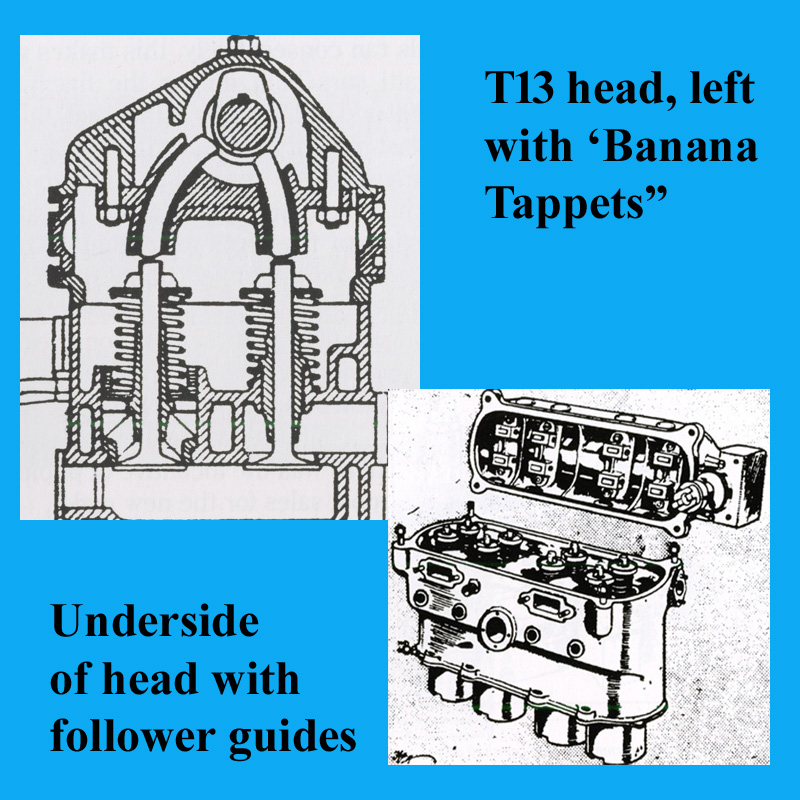
Bugatti’s unique curved valve followers (or tappets) dated from his design for the 1907 Deutz and was refined for the eight valve head on the T13 shown here, and then further modified for the 16 valve head of the Brescia. Thompson says that the valve adjustment procudure is long and difficult.*
Back in the UK, one of the most famous customers was a young Raymond Mays, who helped establish both ERA and BRM, found a means to finance his racing hobby by getting a bit of the bubbly-and perhaps cash- from Martell’s for anointing his two racing Brescia Bugattis “Cordon Bleu” and “Cordon Rouge”, names that would forever be linked with Brescia Bugattis.
The Butterfly Bugatti by Vince Johnson
Brescia Bugattis were imported to Australia as well. Victorian Jim Thompson had arrived at Collingrove, 2018 (read report) in his 1925 Bugatti Brescia, chassis #2567. Delivered new to Australia, it still carries the body added by Martin & King in Melbourne, though the early wooden frame is now tubular. Australian racing legend Lou Molina had restored it, campaigning it extensively in hill-climbs and rallies. At the end of a run in the 1964 Alpine Trial, in the south-east of the continent, it had finished the day with a butterfly stuck to the radiator and the name stuck.
Jim used to help Lou Molina with the car at the Winton track in Victoria. A door was cut into the body in the 1990’s and after Lou’s passing Jim took over custodianship of ‘Butterfly’. During a test with two mechanics on board, a steering problem had caused it to roll resulting in much damage, thankfully just to the car. Jim’s careful repair kept the original bodywork intact, its repaint matched to some of the initial yellow found beneath. Lou’s legacy lives on with Jim, ‘Butterfly’ having toured Kangaroo Island and the Adelaide hills prior to its runs at Collingrove.
Below, Vince Johnson details the Thompson Brescia Bugatti
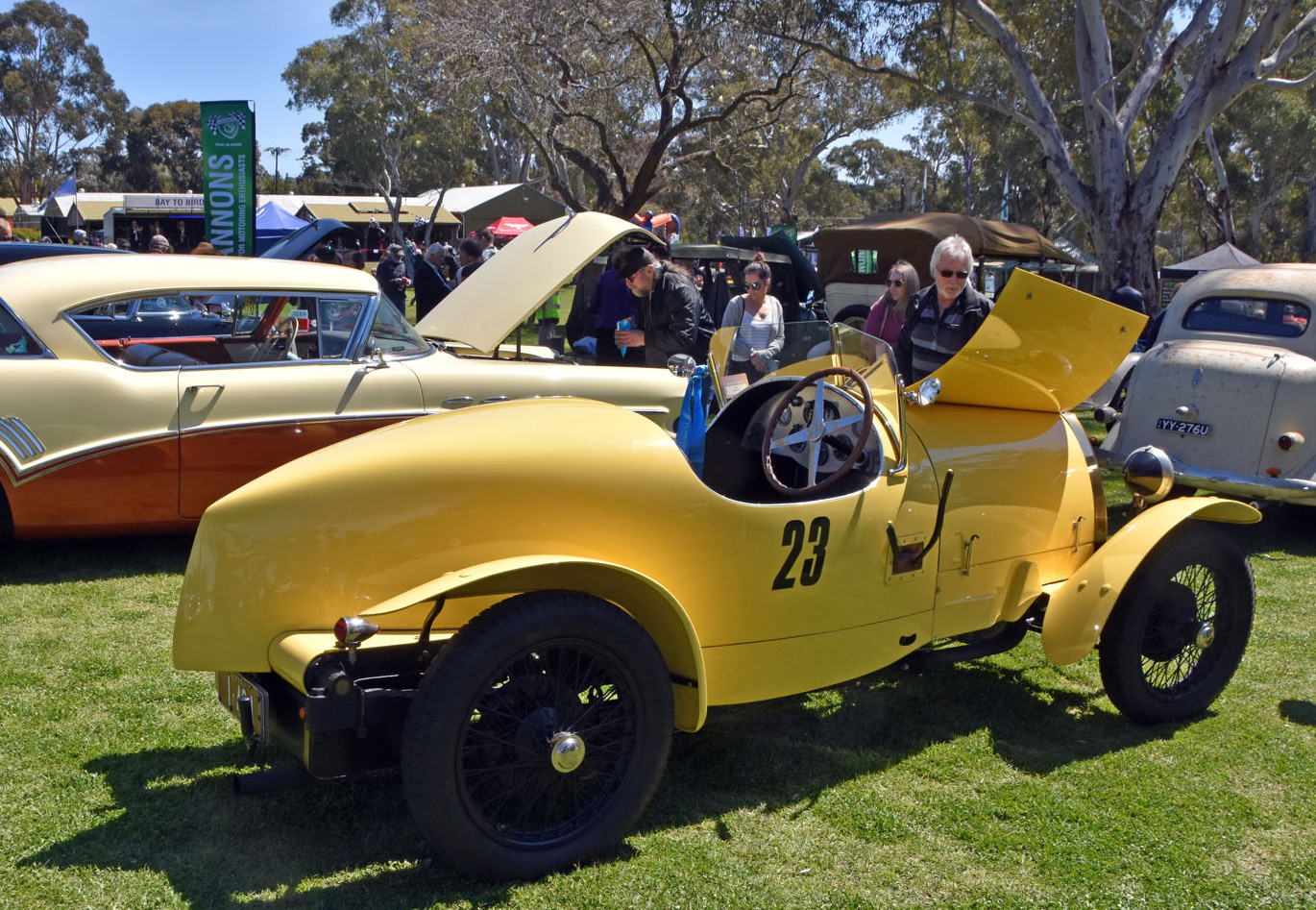
At Birdwood in the grounds of the National Motor Museum where the Bay to Birdwood run finishes with a concours and display, party time all day.
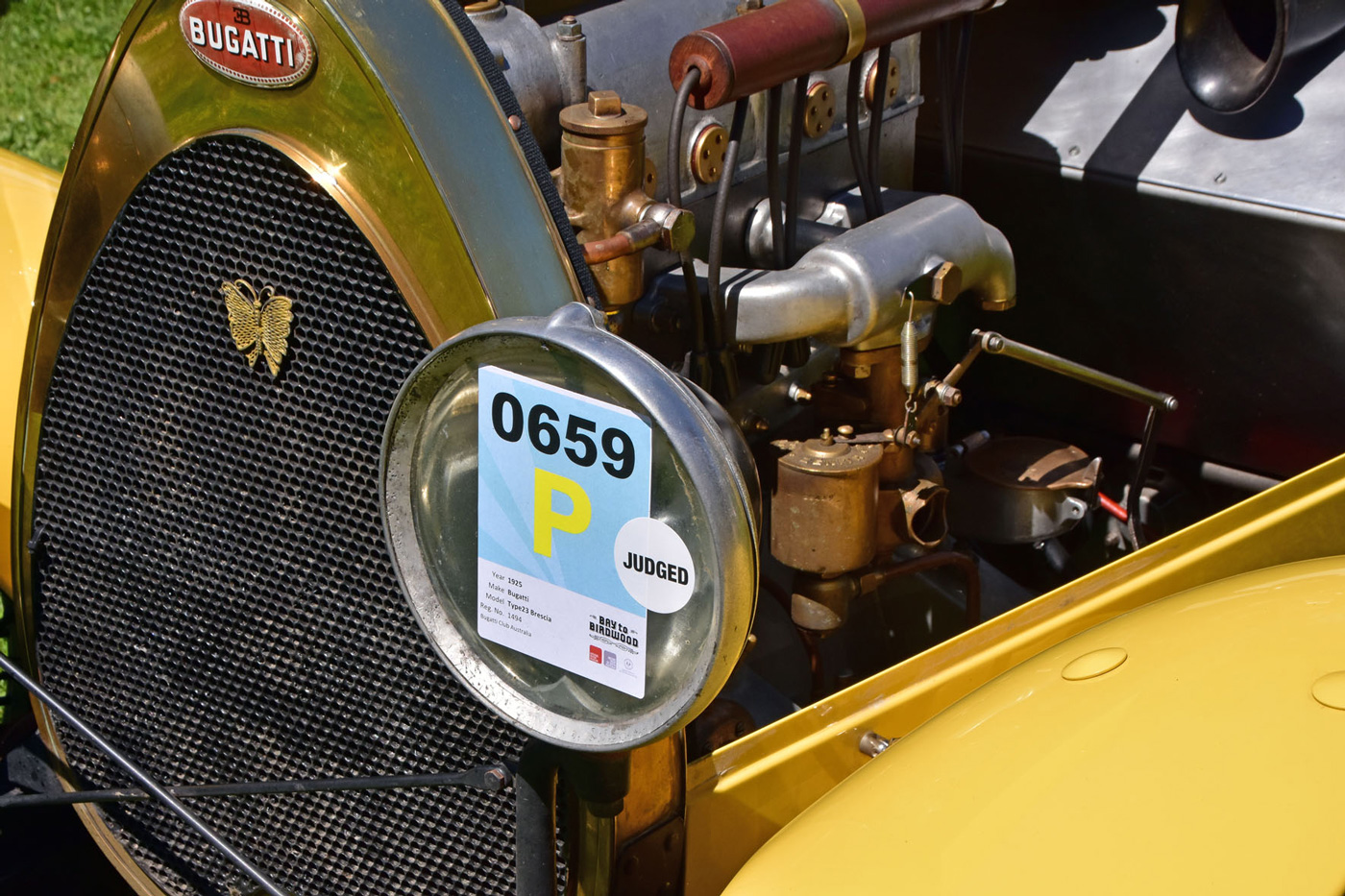
The beautifully shaped grill as seen here was changed to a less complex peice by the end of the Brescia run.
*On page 76 of Borgeson’s Bugatti, there is description of the followers as recalled by Roland Bugatti. He says that on the original T10 Bugatti, the followers were square sectioned “Toroidal tappets”. (Toroidal might be a ring or donut-like object) “He (Ettore) would make a square sectioned steel ring of the appropriate radius…. and chop the ring up into pieces of the length required to serve as cam followers.” On the T10 the cam did not have a full cam cover but the T13 did.








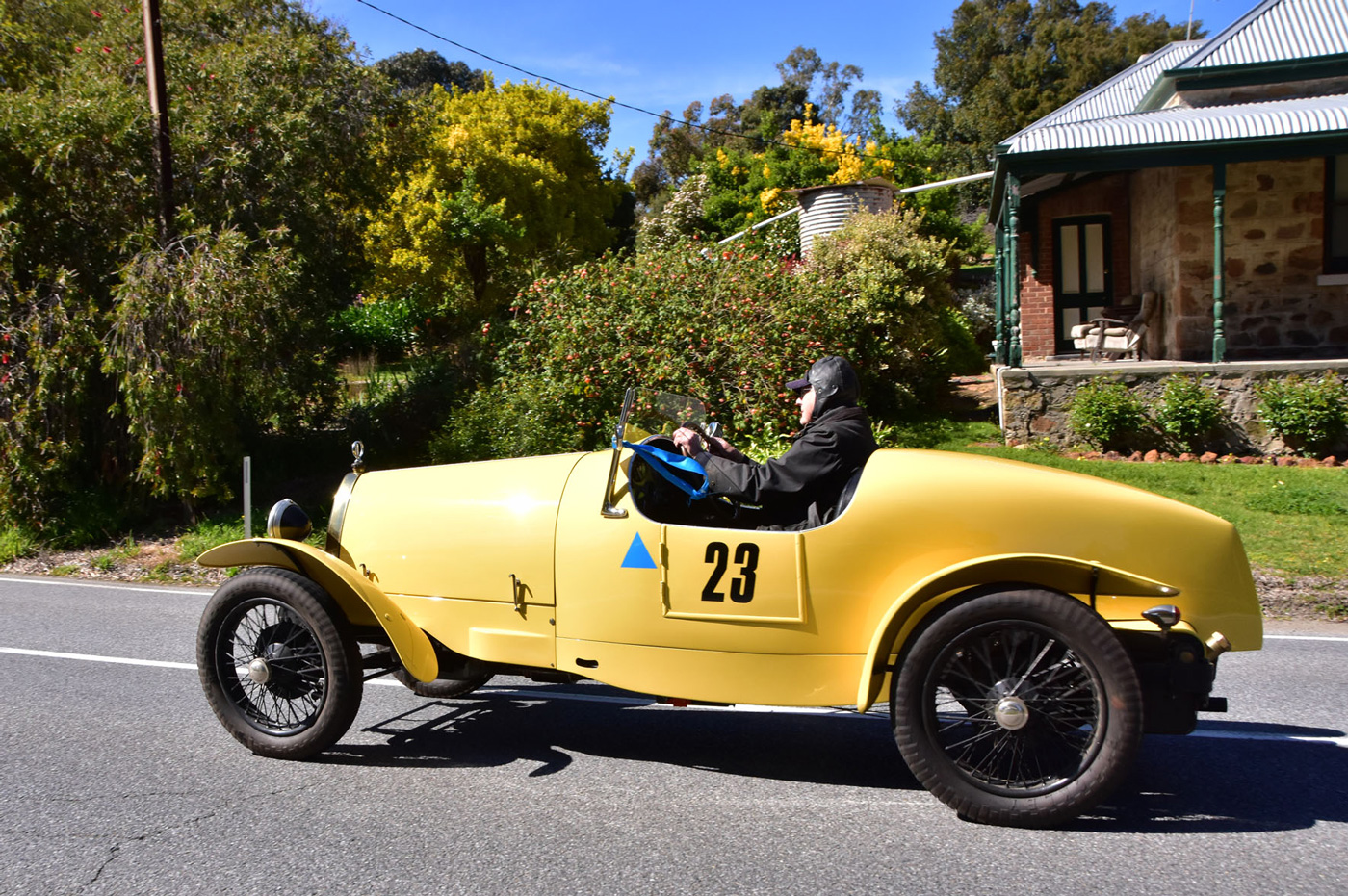
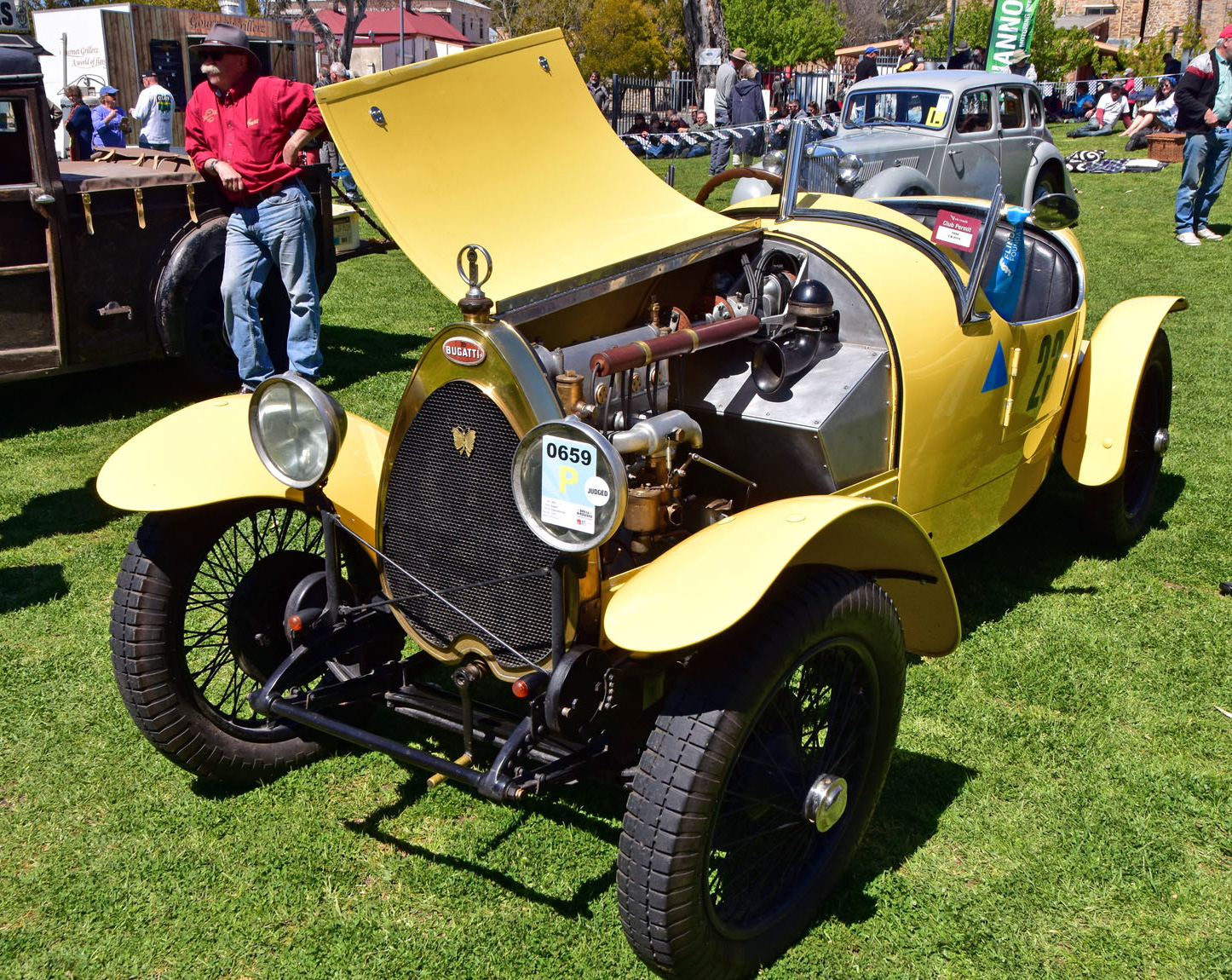

For more information on the Brescia, read ‘The Brescia Bugatti’ by Bob King – still available from the author.